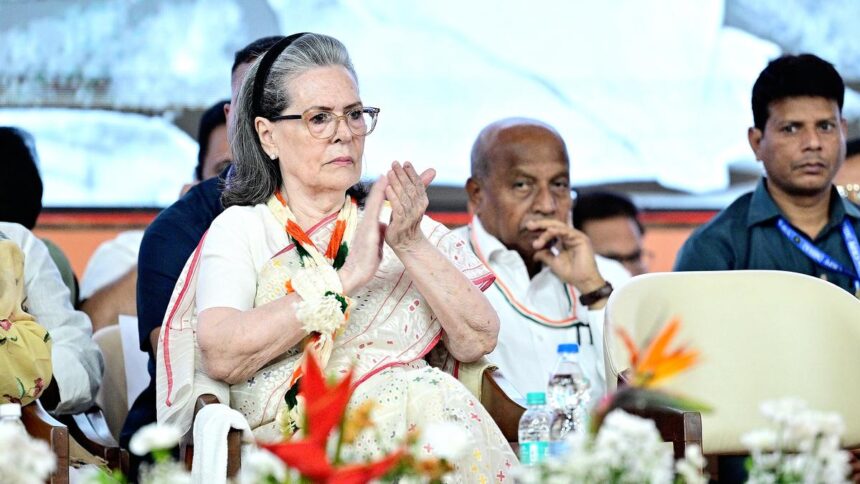Michel Danino, Guest Professor at the Indian Institute of Technology Gandhinagar (Archaeological Sciences) and Head of the Curricular Area Group for Social Science textbooks – a body working in collaboration with the National Council of Educational Research and Training (NCERT) – speaks to The Hindu about the process of designing new middle school Social Science textbooks, the latest being for class eight, and the controversies surrounding the portrayal of the Mughals and the colonial era in the revised material.
Comment on the process of designing new textbooks. What goes into the effort? What are the timelines like?
Several surveys have pointed out that Social Science and Mathematics are among the most disliked disciplines. We want to break that jinx. We are fairly satisfied that we have managed to reduce the information load without sacrificing the essentials of what we would like students to remember. Both class seven and eight Social Science textbooks are divided into two parts. And we are only bringing out the first part with the hope that in a few months, the second part will be available. They are being prepared at the moment.
A debate has arisen about the portrayal of Mughals in the new class eight NCERT textbooks, with their rule being described as ‘a blend of both brutality and tolerance.’ Could you elaborate on the attempt to reframe the portrayal of the Delhi Sultanate and the Mughals in the new textbook?
Every article in the media focuses exclusively on the Mughals and the Sultanate. This is surprising because, for us, it is not the main focus at all. It is only one among the seven chapters. We did speak of brutality and tolerance, though we did not highlight these two words. They were caught by the media.
It is a fact that this is a period that sees a lot of violence, and we have been pretty mild about it. We have been very moderate because, if you look at the entire literature – and I am talking about primary sources now, especially Muslim texts like the Baburnama or Akbarnama – there is absolutely no doubt that these conquests were very violent. In the initial stages, this violence was not limited to India. The Turkic, Mughal, and Afghan powers warred against each other in the Indian subcontinent as well as in Central Asia, sometimes in Persia and beyond. The same violence is a kind of recurring motif.
So what we are saying is simply that this has to be acknowledged as a fact of history. We feel that preceding attempts (at writing textbooks) have often involved whitewashing some of these aspects unnecessarily. While you can’t whitewash history, you also don’t want to include all the gruesome data – because then we would have hundreds of pages to put in, and it could be very depressing for a student. So we hope that we have managed to strike a balance.
Even when the characters were known to be particularly cruel or ruthless at times, we have also tried to show their other side. We have tried to show the complexity of their personality. So, of course, such efforts are going to be criticised. We don’t mind. And if there are positive suggestions for improvements, we will always take them in.
What was the thought behind including a note – ‘History’s Darker Periods’ – at the beginning of the History theme Tapestry of the Past, which deals with the Delhi Sultanate, the Mughals, and the colonial era? There is also a reference to the Second World War and how present generations should not be held responsible for acts committed under Nazism. Please explain.
It is more of a preparatory note for the student, who would suddenly be exposed to unpleasant events of the past. It’s not that the preceding periods were free from such events. We want to prepare the student for the fact that we are entering a phase where there will be unpleasant events. This phase is not limited to the so-called medieval period. It extends right into the colonial era, where there are famines and millions of deaths. The estimates vary from 30 to 60 million deaths, many of which could have been avoided. This is depressing for someone to read – how India was also plundered, impoverished, and so on.
So we thought we should explain to the student that we are not doing this in any spirit of creating bitterness or a feeling of revenge. We do this because it’s important to face honestly those unpleasant events – what we call darker chapters of history – and draw lessons from them to avoid, hopefully, their repetition in the future.
And we took the example of the Second World War because it is the most striking example, where there were untold atrocities. Now, at least, they are very well documented, because these are not ancient times. And yet, we find that a few years after the Second World War, Germany was on good terms with most European powers, including those that Nazi Germany had so badly mistreated. It was possible because the facts were faced and accepted, because there was no attempt to deny them. And of course, because the new Germany, post-Second World War, condemned it.
We are not trying to parallel this with anything in the Indian past. We are saying simply that it is only by looking honestly at history that you can find the key to healing- the suffering, the pain that the past inflicted on, sometimes, large sections of the population.
The most recent example we can take is the chapter on colonial rule in the textbook. Because there is a government in place, a nation in place – in the U.K. too – and it is not unknown that there had been trillions of dollars of drain of wealth, which has also been very well documented, from British rule to Britain.
Time and again, there have been calls for acknowledgement of the suffering inflicted upon colonies by the U.K. But such acceptance has immense financial repercussions. Do you think the mentions in the textbook will change anything?
I feel that Britain has not sufficiently recognised the tremendous amount of suffering that it inflicted, not only in India, but in most of its colonies. I will not discuss the question of reparations, which is a separate issue, but at least an honest admission of guilt – of the abuse, atrocities, and economic plunder that took place during the colonial period – is something that we have not seen to the desired extent.
It’s not about holding today’s British people responsible. They’re not responsible for what happened a hundred years ago. It is about being lucid about history and understanding what the motivations of the British were.
We had restricted space, but we wanted to bring in this important element- for example, how colonial British rule ruined India’s native industries, which were flourishing up to the 18th century. These are things that are not sufficiently known.
The new class eight Social Science textbook, unlike older versions, does not mention Tipu Sultan or Haider Ali. On the other hand, there is an entire chapter dedicated to the rise of the Marathas and Shivaji’s exploits. What was the thought behind introducing a new chapter on the Marathas?
For events like the Anglo-Mysore Wars, you have to give the student enough context for the event to become meaningful. You can’t just drop names like Tipu Sultan and Haider Ali. We would have to dedicate two to three pages to this. However, there are four more years after class eight where the working groups can take up certain themes [which were missed out], and the gaps will be somewhat filled in the later years, hopefully.
It’s very well known among historians that the division into Hindu, Muslim, and then British periods is absolutely not valid. We wanted to show that this was not a straightforward story, and there was a lot of resistance. We could only very briefly mention the case of the Ahoms in Assam and the Sikh Empire. Each of them would technically deserve a bigger treatment.
But we selected the Marathas for a larger focus because it is a fact that they were the ones who ultimately managed to build, though briefly, an empire which spread over a very large portion of India – their influence extended to Delhi and even beyond to what is today Pakistan. They stymied multiple attempts by the Mughals to conquer the south of India. Aurangzeb spent more than 25 years stuck in the Deccan. He was unable to return to Delhi largely because he was blocked by Maratha campaigns.
I am just explaining the statement we made in the textbook, which was deliberately a little bit provocative – maybe the British conquered India more from the Marathas than from the Mughals.
In the new class eight textbook, there is no mention of Raziyya Sultan or Nur Jahan. However, there are references to Queen Tara Devi, Durgavati, and Ahilyabai Holkar. Can you comment on the portrayal of women in the textbook?
I think the choice was not something we pondered on very deeply. It was more in the unfolding that we chose a narrative. We could have chosen a lot more. Why did we choose Hazrat Mahal and not Nur Jahan, for example? I would like to point out that the choice is not final. There are more chapters to come in the second part of class seven and eight.
For example, Hazrat Mahal is an amazing personality with tremendous strength, and she is very poorly known. So she perhaps deserved a little more highlight than the better-known names, which can appear at a later stage.
Students of the academic year 2025–26 currently have no visibility on what they are going to study after six months, as only part one of the Social Science books has been released. When can students expect part two books to be released for classes 7 and 8? Also, NCERT has not released the new syllabus. Comment…
As far as the syllabus is concerned – whether it is published or not, or in what form – that is not in our (Curricular Area Group) hands. It is really for NCERT to decide.
If you look at class seven – part one and class eight – part one, they are already available. In fact, you can yourself fill in some of the gaps. class seven – part one ends with the Gupta Empire. We are going to deal, in class seven – part two, with the period that followed the disintegration of the Gupta Empire. There were many important dynasties, so we will explore what key ideas identify that period. The transitional 11th and 12th centuries will also be addressed in part two of grade seven.
We have introduced the colonial era in part one of the grade eight textbook. So that naturally leads into the struggle for freedom – the movement to liberate India from British colonial rule – which will be taken up in the second part.
There are rumours that the right wing may be influencing the direction of the new textbooks. Does the development of the new textbooks reflect a reshaping of political ideology?
So the media loves these stories, and finding a political axe to grind is always very tempting. Our textbook development team has experienced zero political pressure from the government or from any RSS channel or personality whatsoever.
We have been left free to work as we thought appropriate, under the mandate of the National Education Policy 2020 and the National Curriculum Framework. There is a review process and a larger committee – the National Syllabus and Teaching-Learning Committee (NSTC) – that oversees the process. The names of the NSTC committee members are in the public domain. But this has nothing to do with any sort of political control.




















